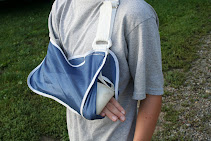Illinois, Michigan and North Dakota are the only states that expressly prohibit sexual harassment. Other than these states, sexual harassment acts are considered as a type of discrimination. In California, for instance, these acts are prohibited by a number of statutes and by the federal Title VII of the Civil Rights Act and the ADA.
These laws and other various statutes ensure that victims of sexual harassment are protected. Other than this, the state government continues to make laws to improve the conditions in the workplace and prevent sexual harassment acts. AB 1825, for instance, is a law passed in 2004, which provides training for supervisors on how to handle situations involving sexual harassment.
The article “Testimony in Hollywood Sexual Harassment Suit Continues”, posted on September 24, 2008, tells of the continuing sexual harassment lawsuit brought up by an actor against a fellow worker.
The article mentioned the changes that have taken place since the lawsuit was filed. In this case, a witness has made a different testimony regarding the alleged sexual acts, contrary to what was presented by the plaintiff.
As sexual harassment is a delicate issue, the law has defined which acts are considered harassment and thus prohibited:
• vulgar or lewd comments
• forcing workers to wear sexually revealing uniforms
• unwanted physical touching or fondling
• suggestions to engage in sexual conduct
• Even obscene or sexually suggestive cartoons and posters
• Occasional inappropriate touching, off-color jokes, or repeated sexual references can be sexual harassment.
It depends on the circumstances. Courts consider the nature, severity, and frequency of the conduct, as well as the conditions under which the conduct occurred.
These laws and other various statutes ensure that victims of sexual harassment are protected. Other than this, the state government continues to make laws to improve the conditions in the workplace and prevent sexual harassment acts. AB 1825, for instance, is a law passed in 2004, which provides training for supervisors on how to handle situations involving sexual harassment.
The article “Testimony in Hollywood Sexual Harassment Suit Continues”, posted on September 24, 2008, tells of the continuing sexual harassment lawsuit brought up by an actor against a fellow worker.
The article mentioned the changes that have taken place since the lawsuit was filed. In this case, a witness has made a different testimony regarding the alleged sexual acts, contrary to what was presented by the plaintiff.
As sexual harassment is a delicate issue, the law has defined which acts are considered harassment and thus prohibited:
• vulgar or lewd comments
• forcing workers to wear sexually revealing uniforms
• unwanted physical touching or fondling
• suggestions to engage in sexual conduct
• Even obscene or sexually suggestive cartoons and posters
• Occasional inappropriate touching, off-color jokes, or repeated sexual references can be sexual harassment.
It depends on the circumstances. Courts consider the nature, severity, and frequency of the conduct, as well as the conditions under which the conduct occurred.






